|
|
Post by devonian on Mar 16, 2008 6:32:48 GMT 7
I recently purchased an Evesham Mbox from eblag and as others have found it is noisy and runs too hot for my liking (45+ Celcius with no activity - not good). So, after reading a few posts on here I set about making it a bit cooler and quieter! First thing is to remove the original fan and discard it!!! Added a heatsink to the processor (small amount of heatsink paste underneath) and fixed it with silicon sealer. Also added some light 'shades' to the LED's. 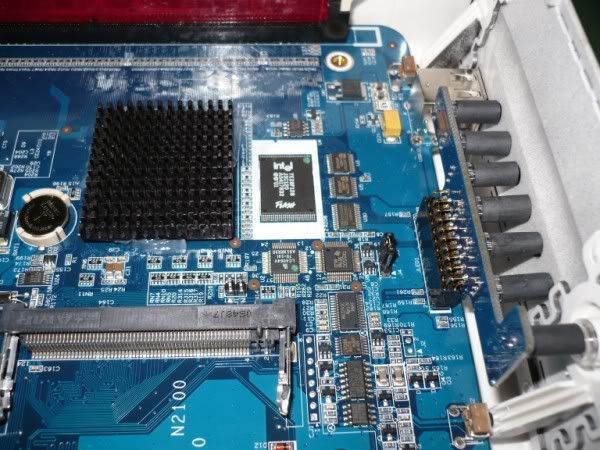 Added a heatsink to the hard drive cage (there are also slots in line with the existing cage cutouts). 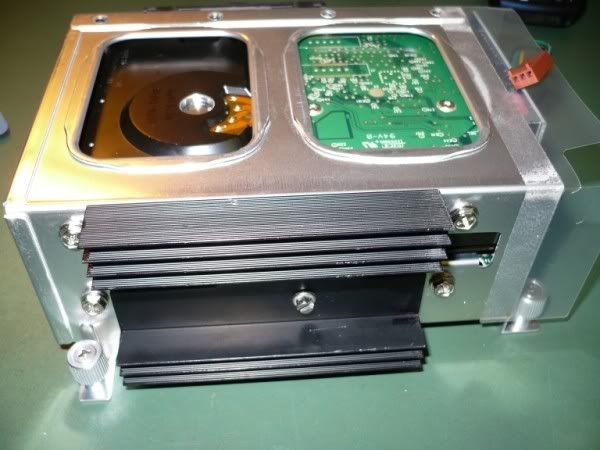 Mounted a cutdown Pentium processor fan to the drive cage (slotted the cage for more airflow into the lower hard drive). 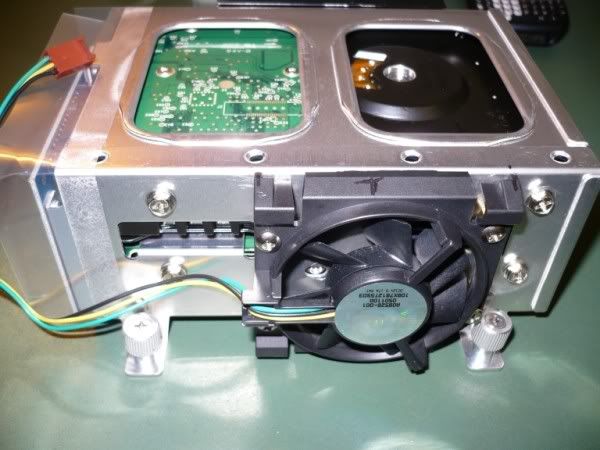 Machined some air slots in the side of the casing for the fan. 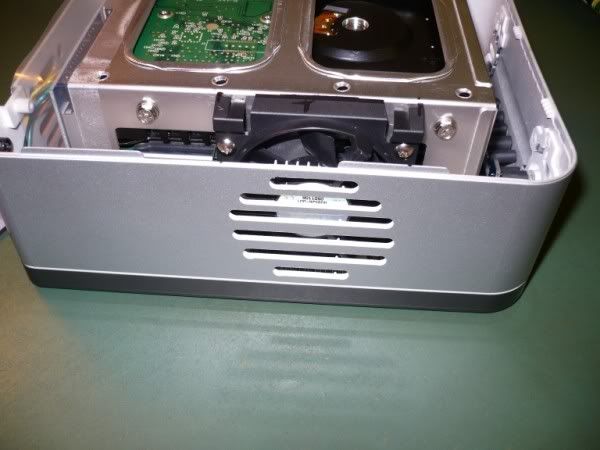 Machined some 'exhaust' slots on the opposite side of the case. 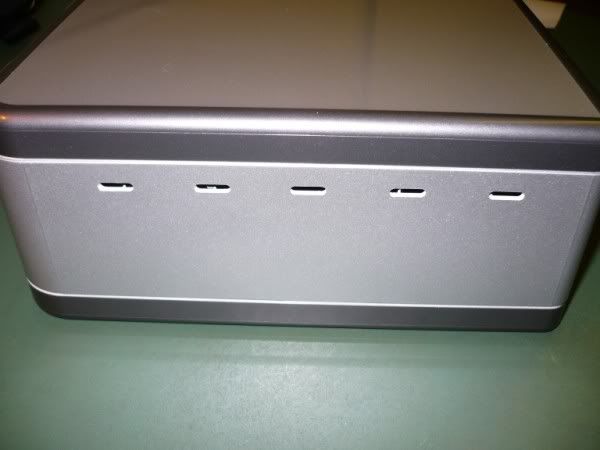 Fitted the lid and it looks OK. 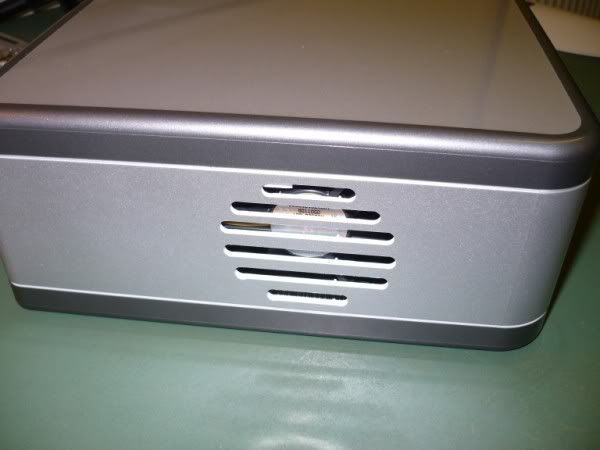 Ran it for some time with 40GB file transfer to and from the box from PC1 and watched a video from PC2. Runs sweet. 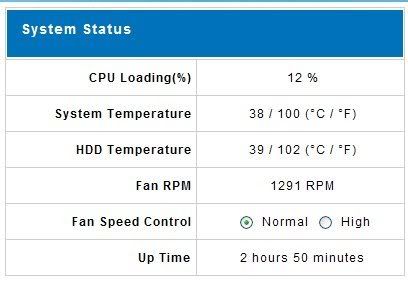 When idle, it runs at 36/37 Celcius with room temperature of 21 C. Full spec is: Firmware updated to latest Thecus release. 2 x WD1500ADFD Raptor SATA drives - 10k RPM in RAID1 config. 512MB RAM (Kingmax). Only thing with these drives is they won't shutdown/spindown and run all the time  Any mod for this?? Nigel. |
|
|
|
Post by spiken on Mar 16, 2008 14:54:21 GMT 7
Really good work !
On the picture I can see that you ve fix the fan with screws, but how can you do that with the two drice just behind the case ?
|
|
ferg
Full Member
  
Posts: 119
|
Post by ferg on Mar 16, 2008 23:58:59 GMT 7
I think the screws look like there are just for the fan to secure the assembly.
I have one little comment: if on one side of the hard drives you have a fan blowing or sucking, why have you put a heat sink on the other side which restricts airflow in the direction of the fan?. Does it not make the holes in the case useless? I would have made the smaller holes bigger and had no heat sink.
Can i ask how you made the holes? Dremel?
Cool mode, very discrete!
|
|
|
|
Post by devonian on Mar 17, 2008 2:22:35 GMT 7
To secure the fan I drilled and fixed some old brass hexagon motherboard standoffs - 6mm in height.
Where the bit of thread came through the casing, I cut it off and rivetteted it over so that the hard disks can still slide in without fouling the standoffs.
The fan is then screwed to the 4 standoffs (you can see the screw heads in the pic).
The heatsink is not the best, but it was free! so I just used it.
It seems to be helping because at least it is giving some 'fins' to allow the moving air to remove some heat from the drive cage. Without the heatsink, there is nothing, so not much chance to remove heat from the drive cage.
I made the slots on a milling machine.
First, I put some masking tape on the sides and marked out where I wanted the slots, then machined them out with a slot drill.
I guess you could drill 2 holes at each end of the slot and then dremell or saw out the slots, finishing it off with a file (or 'chain drill' a series of holes and file them to a good slot finish).
It sits at a reasonable 36/37 C so I am not sure any bigger slots are needed.
I can feel heat coming from the exhaust slots and from the old fan slots at the rear, so the fan is doing it's job.
The fan is blowing air into the case and not sucking the hot air out.
In my opinion, pressurising is the better way to cool things.
If my explanation is not clear, I can take some more pics if needed?
Nigel.
|
|
|
|
Post by dbridges on Mar 17, 2008 5:01:37 GMT 7
To secure the fan I drilled and fixed some old brass hexagon motherboard standoffs - 6mm in height. Where the bit of thread came through the casing, I cut it off and rivetteted it over so that the hard disks can still slide in without fouling the standoffs. The fan is then screwed to the 4 standoffs (you can see the screw heads in the pic). What a fantastic idea. |
|